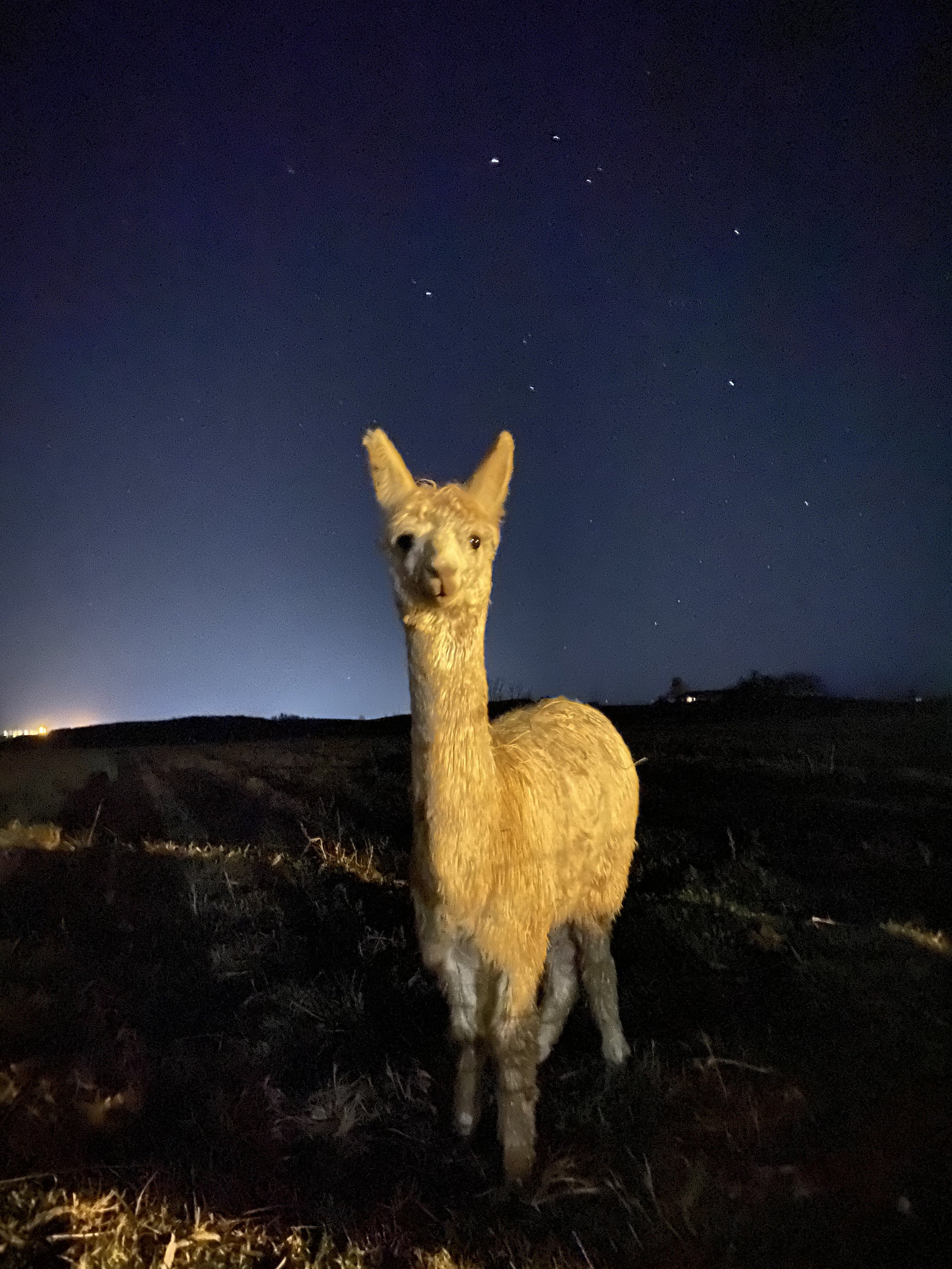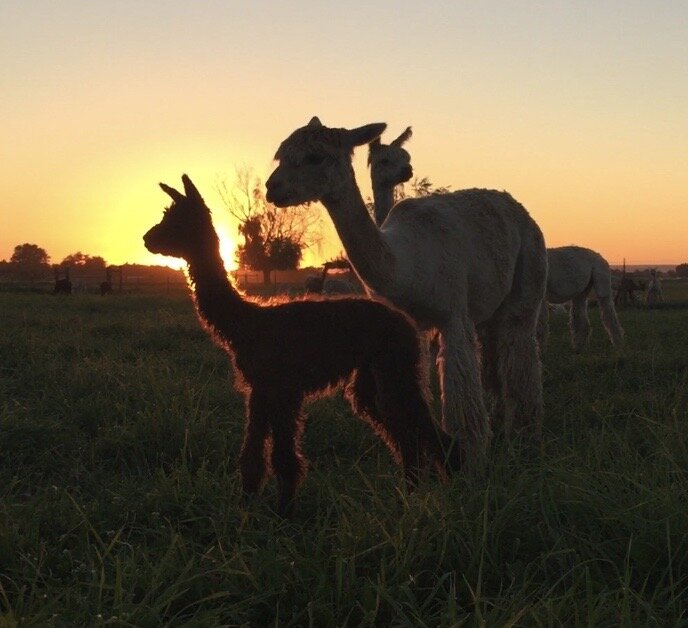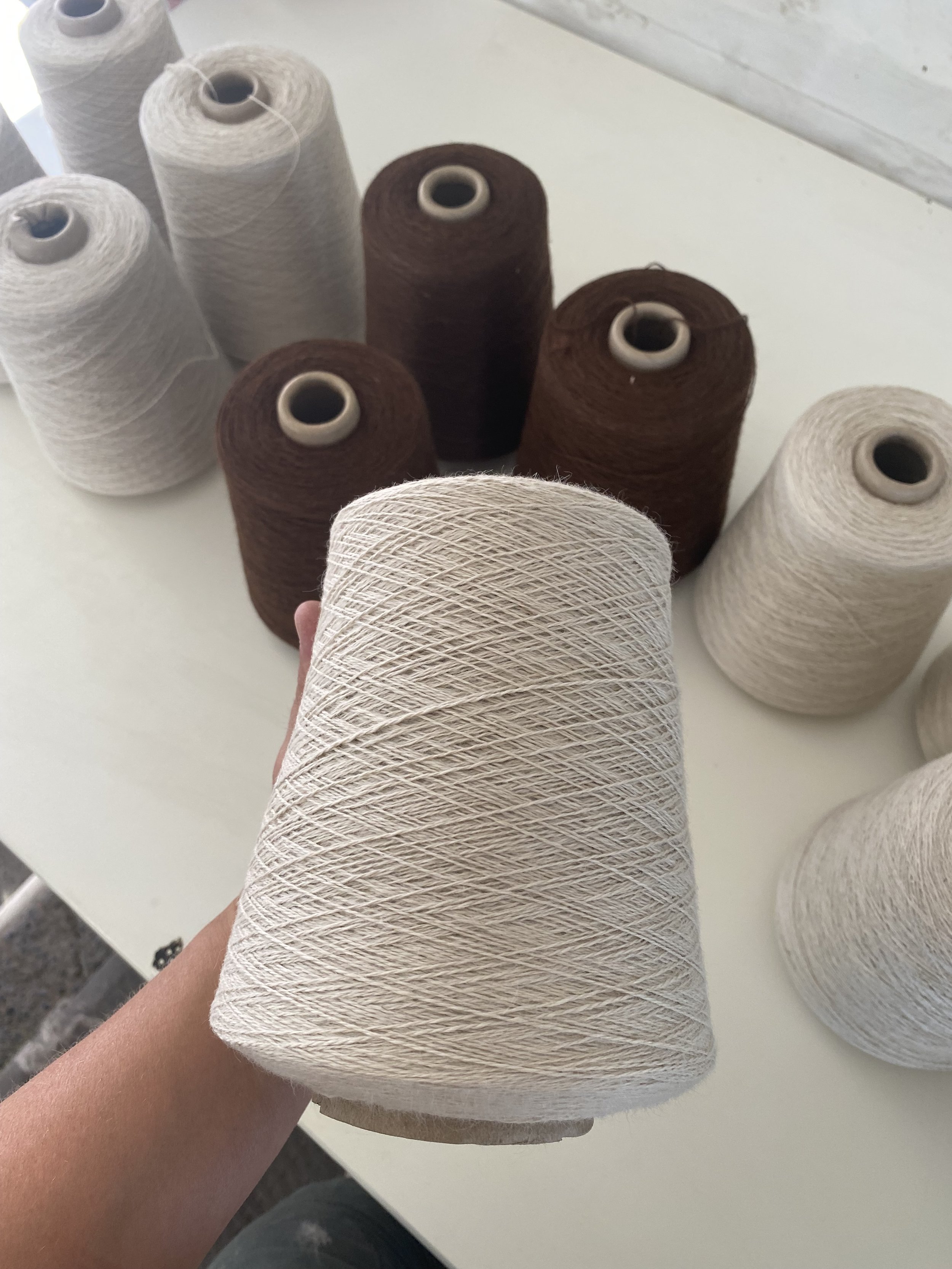the 2025 Harvest Knitwear Collection
available now in our online store!
We only offer what we produce on our farm here in Walla Walla, Washington.
Every spring, our herd is shorn.
This single, solitary harvest is all we get for the entire year.
And because we have a small herd, just 26 alpacas, each harvest contains a finite amount of fiber.
This means the Collection is genuinely limited edition.
Similar to our wine growing neighbors, each Knitwear Collection is it’s own vintage.
It takes shape in a variety of garments, from hats and beanies, to cowls and mittens.
Hand dyed in small batches right here on the farm by the Shepherdess herself, the colors come from heirloom dye plants that grew alongside the alpacas.
It’s a beautiful full-circle process to combine natural fibers with natural colors that become wardrobe stables and heirloom treasures.
Here’s the step-by-step process.
-
Grow
It takes 365 days of water, sunshine, grass and hay to produces the most luxurious fiber ever.
-
Harvest
Shearing happened on 5/17/2025, and we harvested 60 pounds of pristine fiber.
-
Process
The fiber mill processed our raw fleece into yarn.
-
Knit
A small machine-knitting operation took our yarn and made each item, right here in the USA.

-
Dye
Each piece was hand-dyed using heirloom dye plants grown right on the farm.
-
Sale
Offered exclusively to our email list, the Collection launches in Fall 2025. Every order is packaged in the farmhouse by the shepherdess and we ship nationwide + Canada.
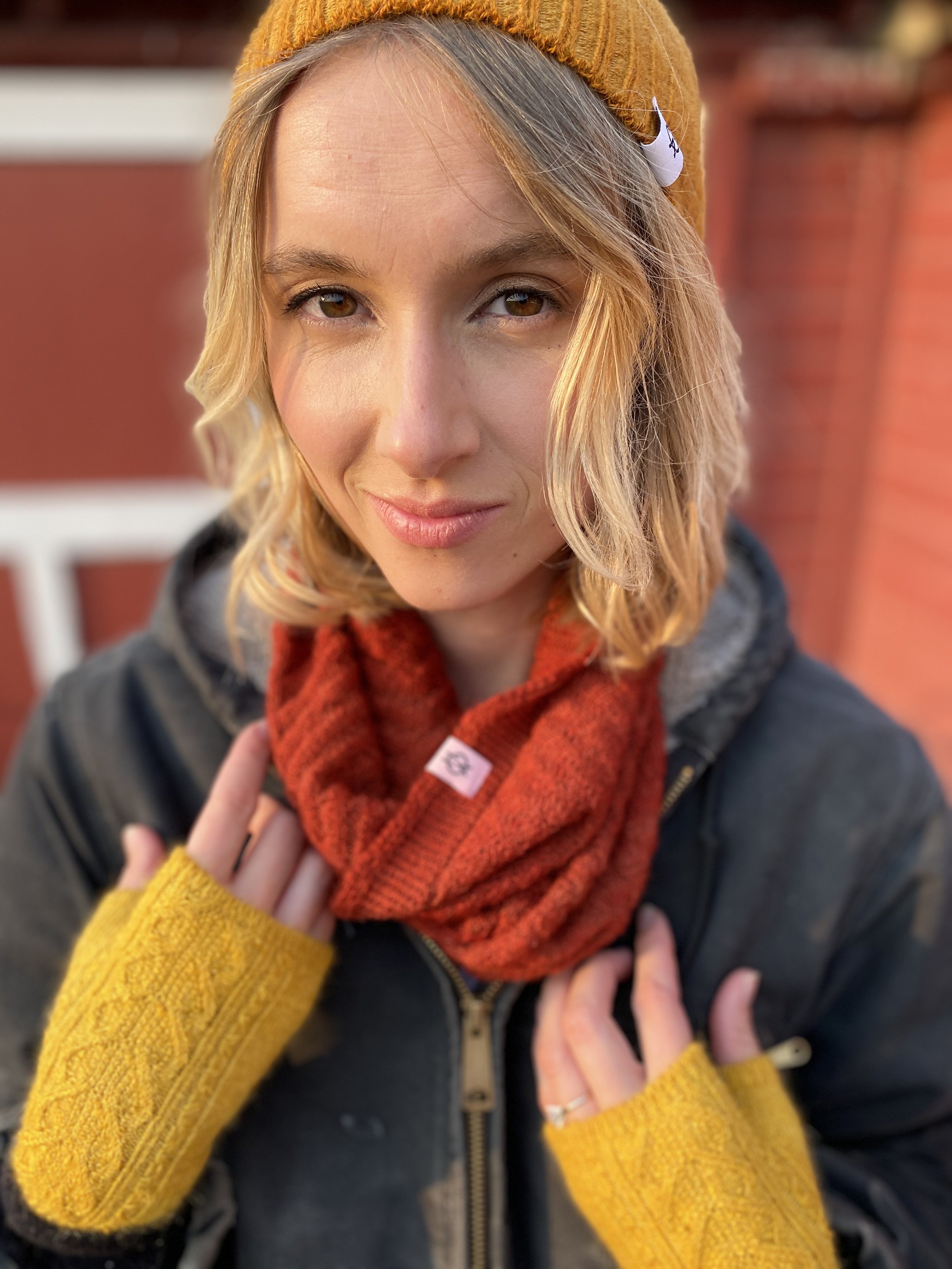
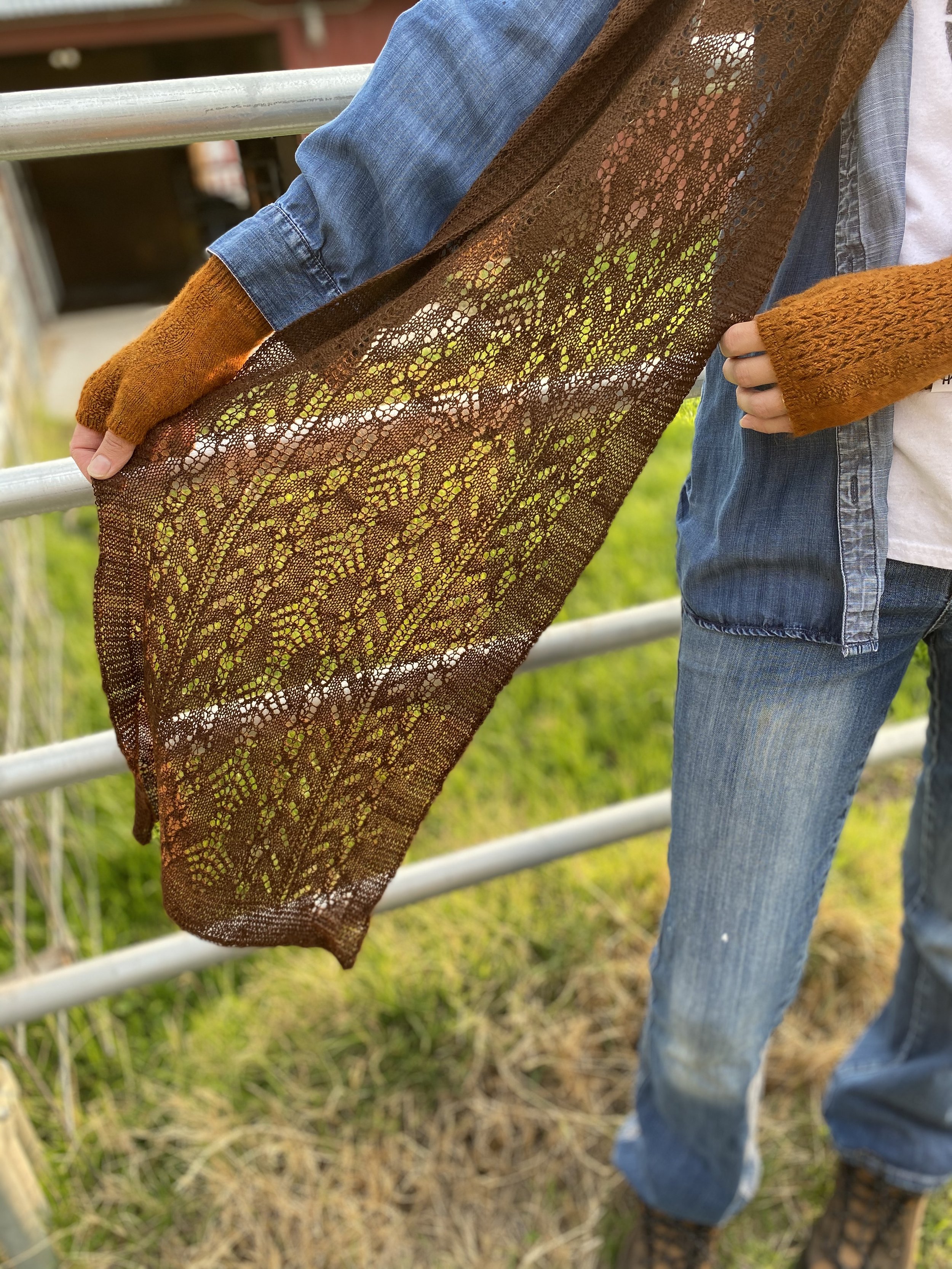
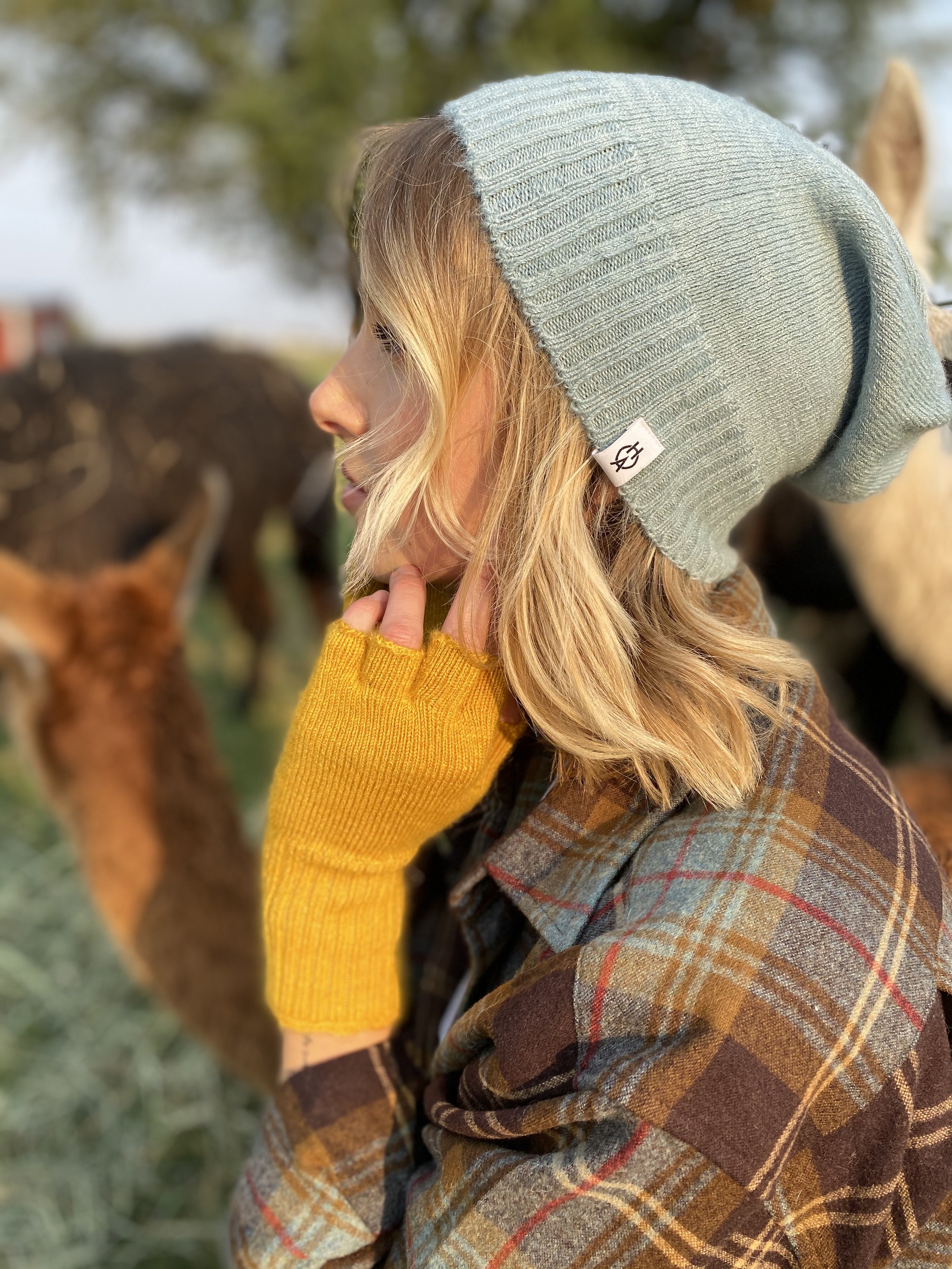
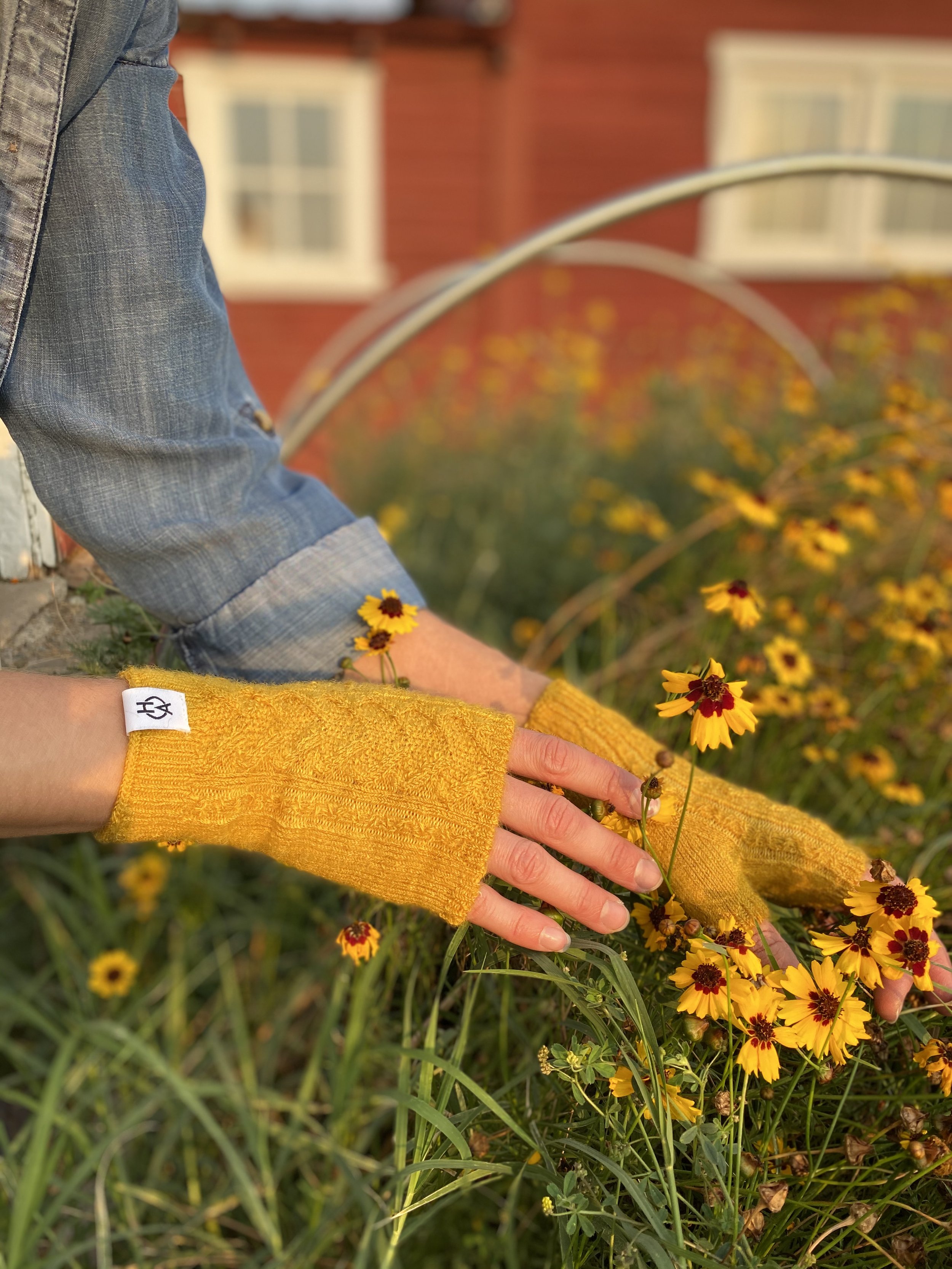


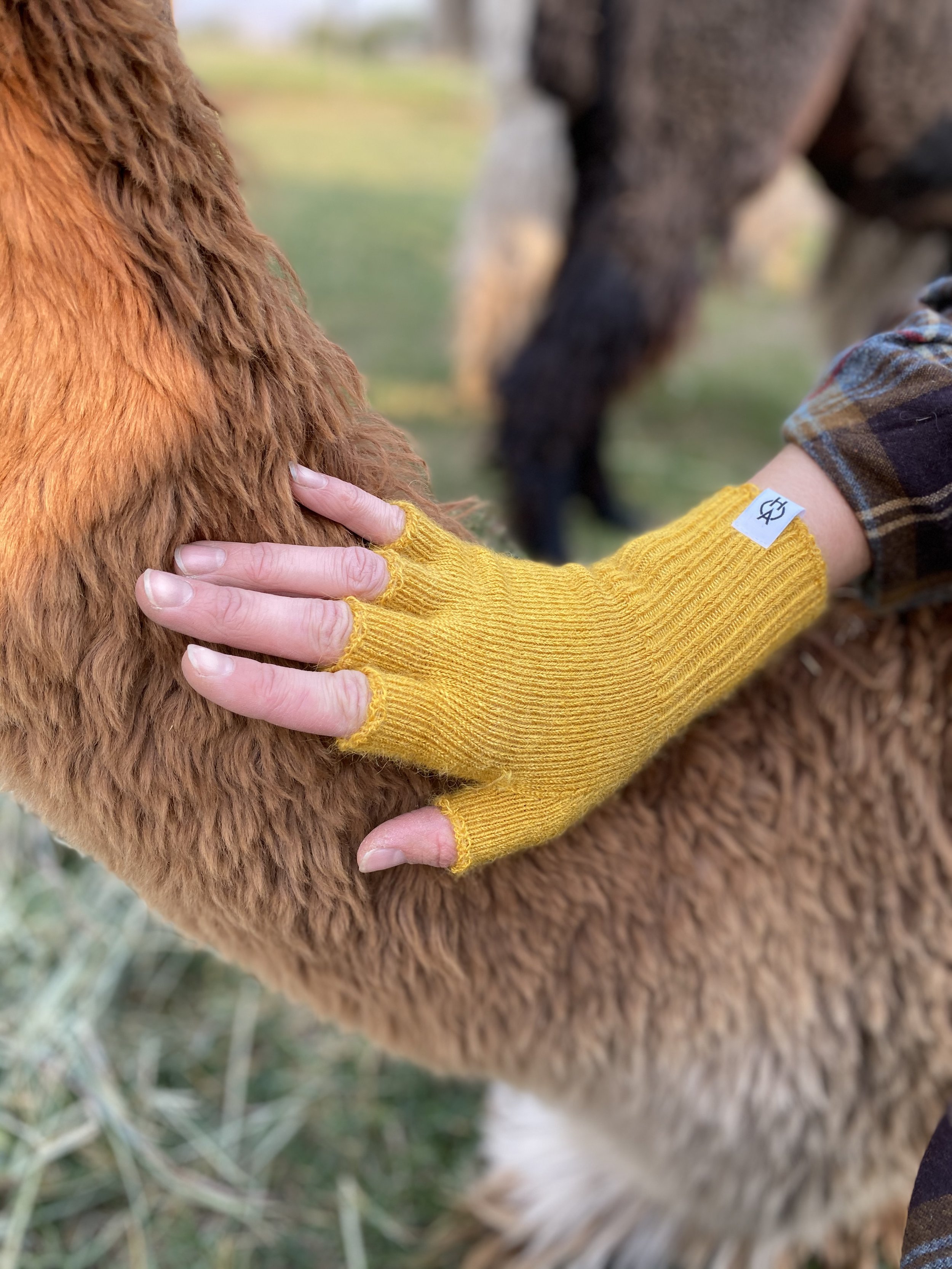
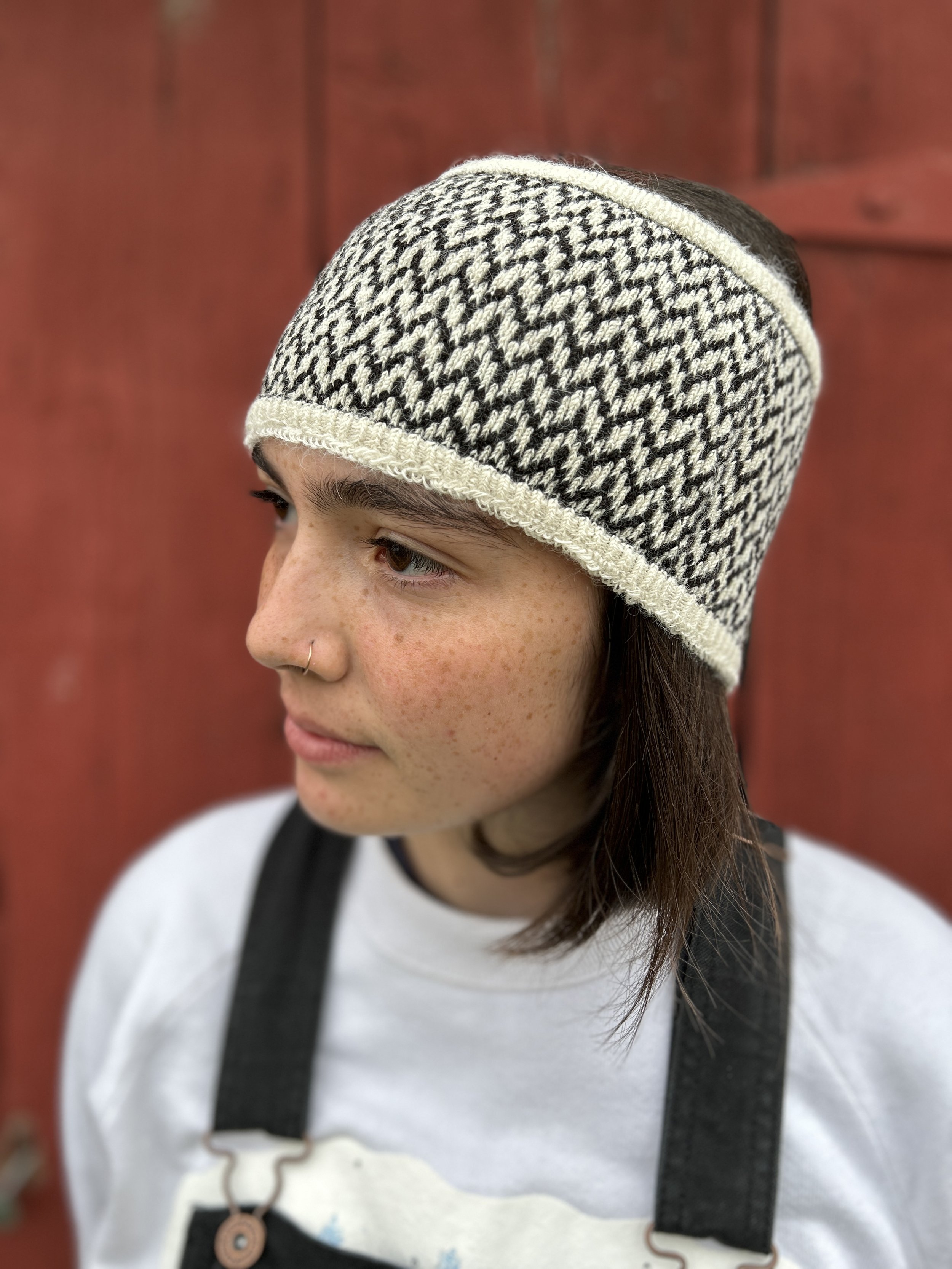

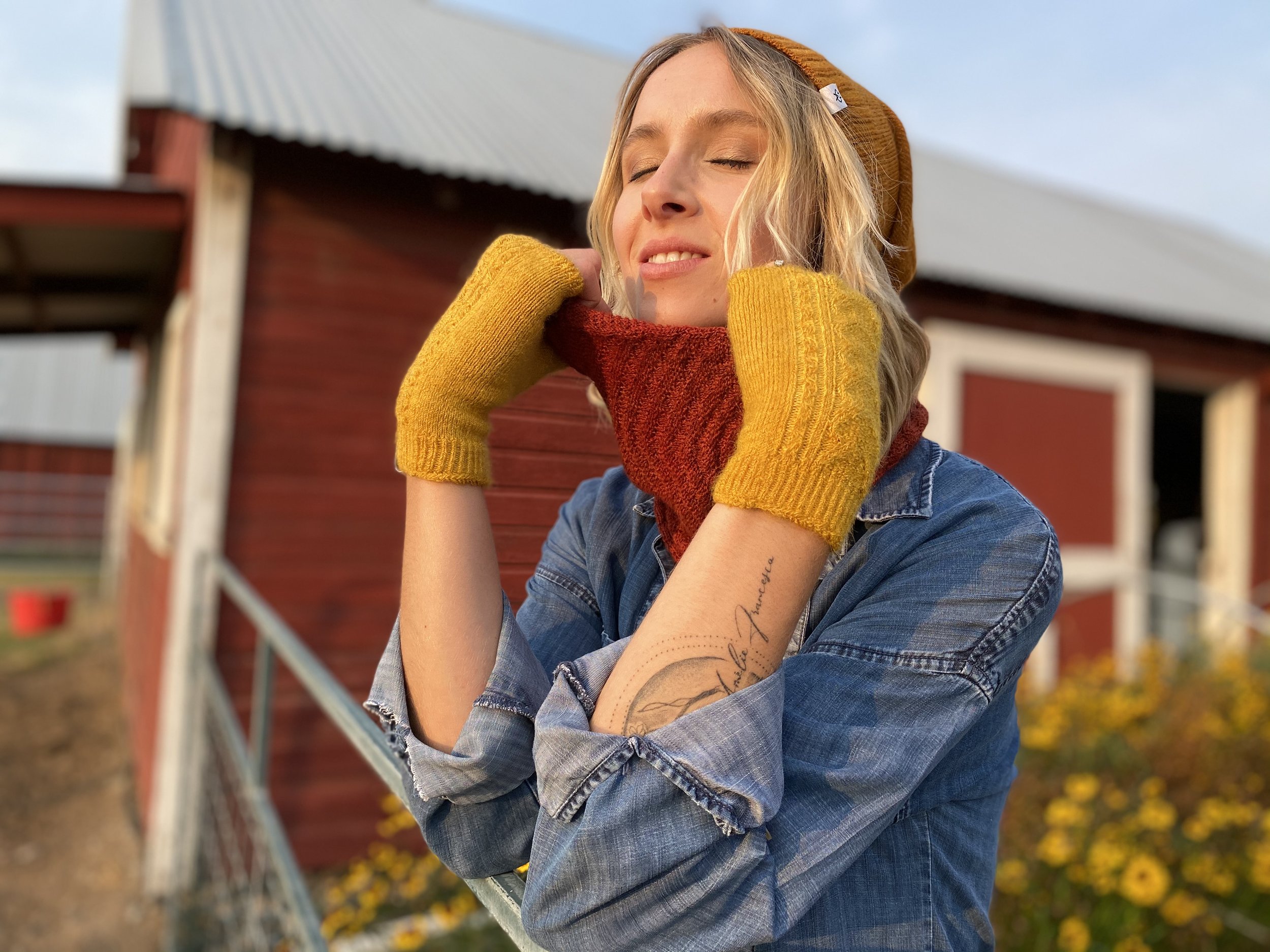

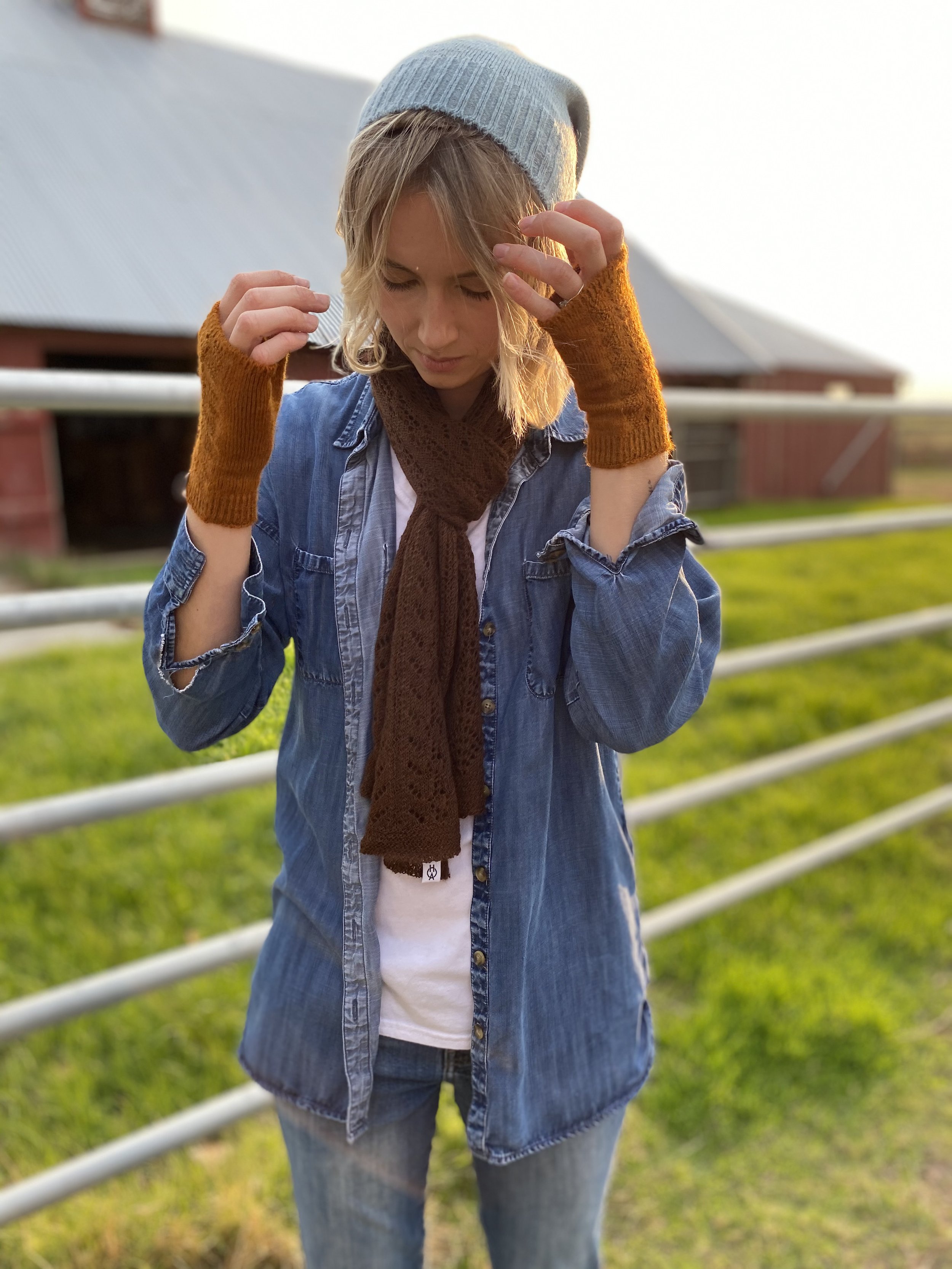
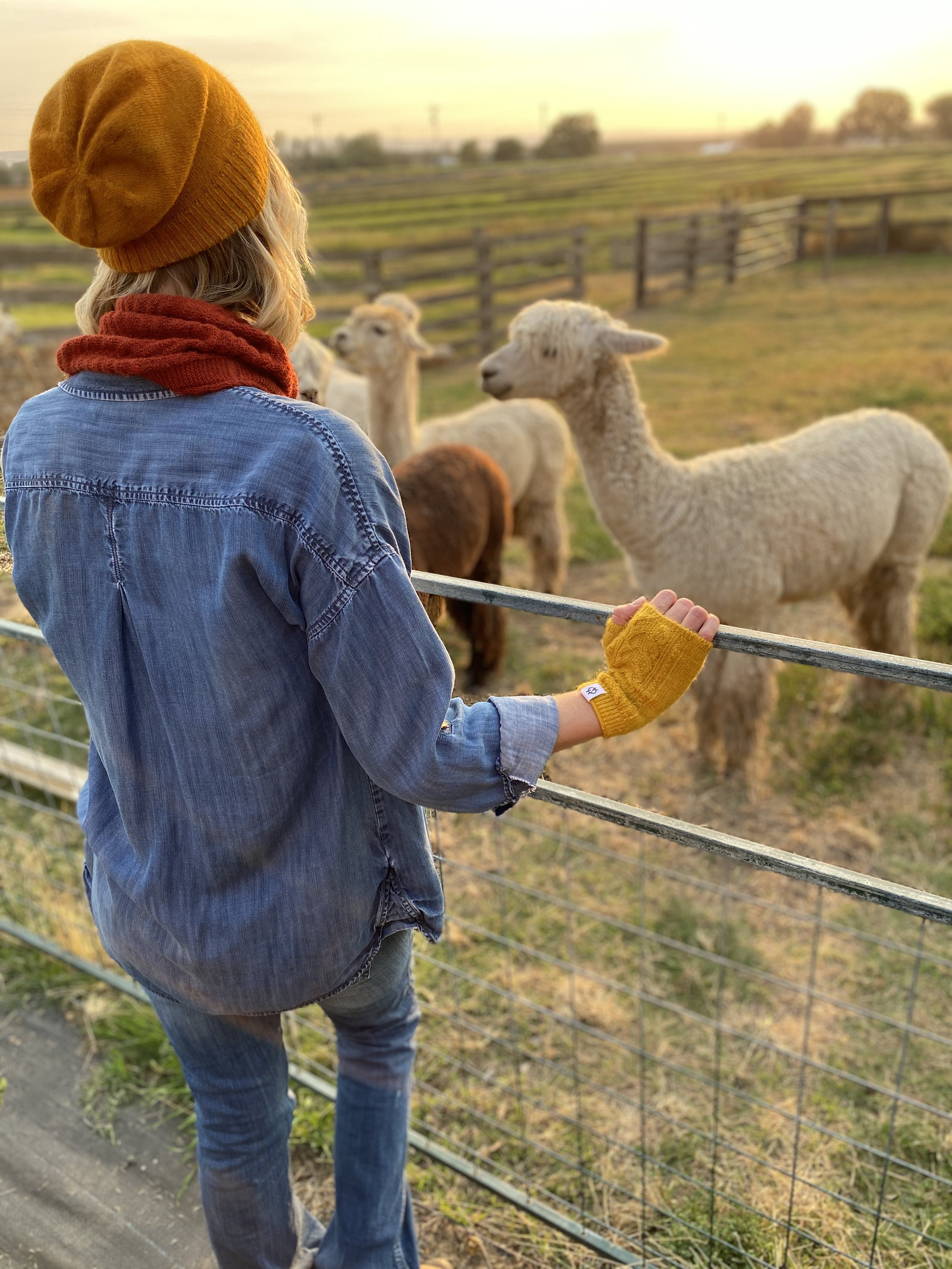


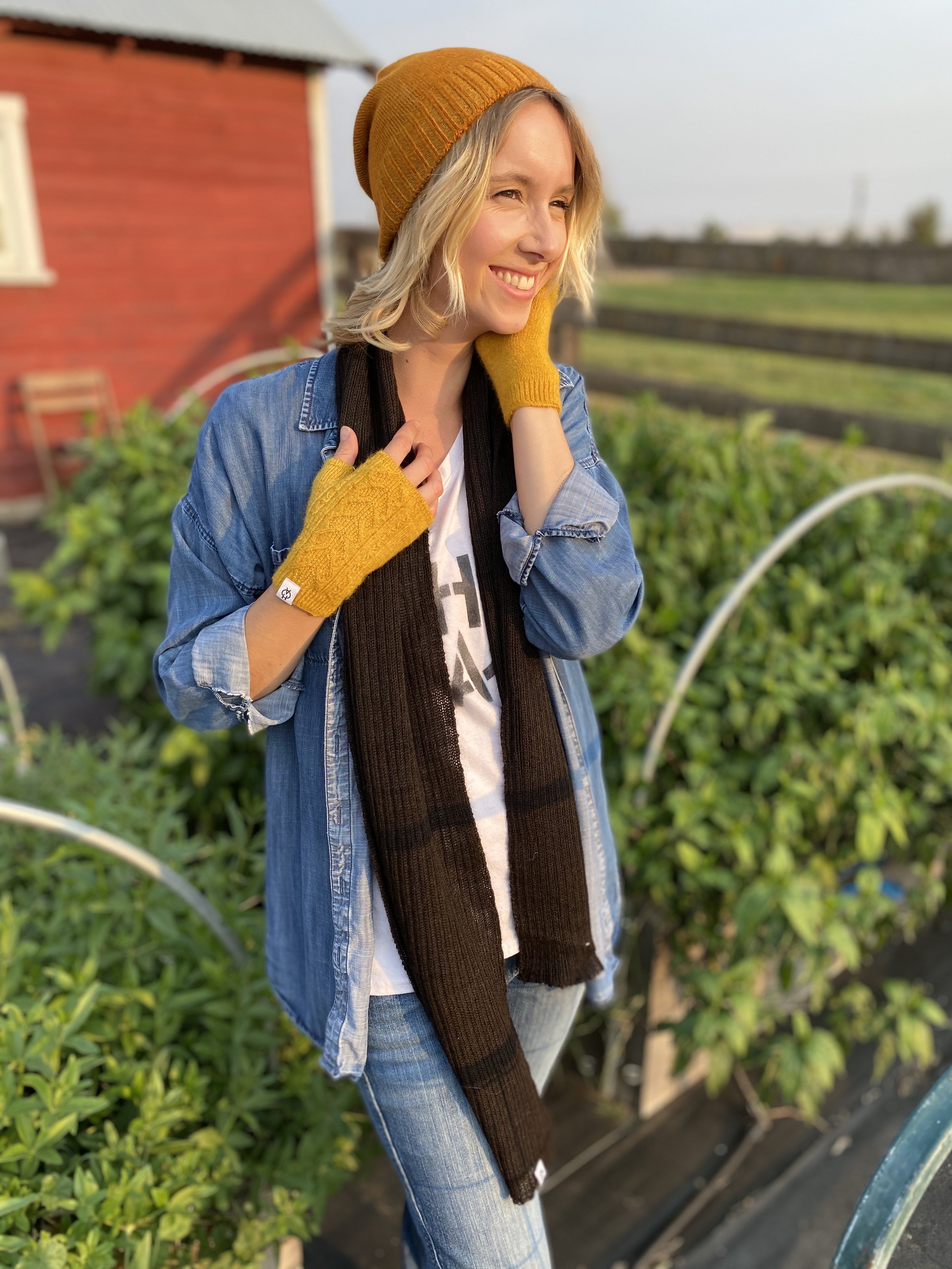
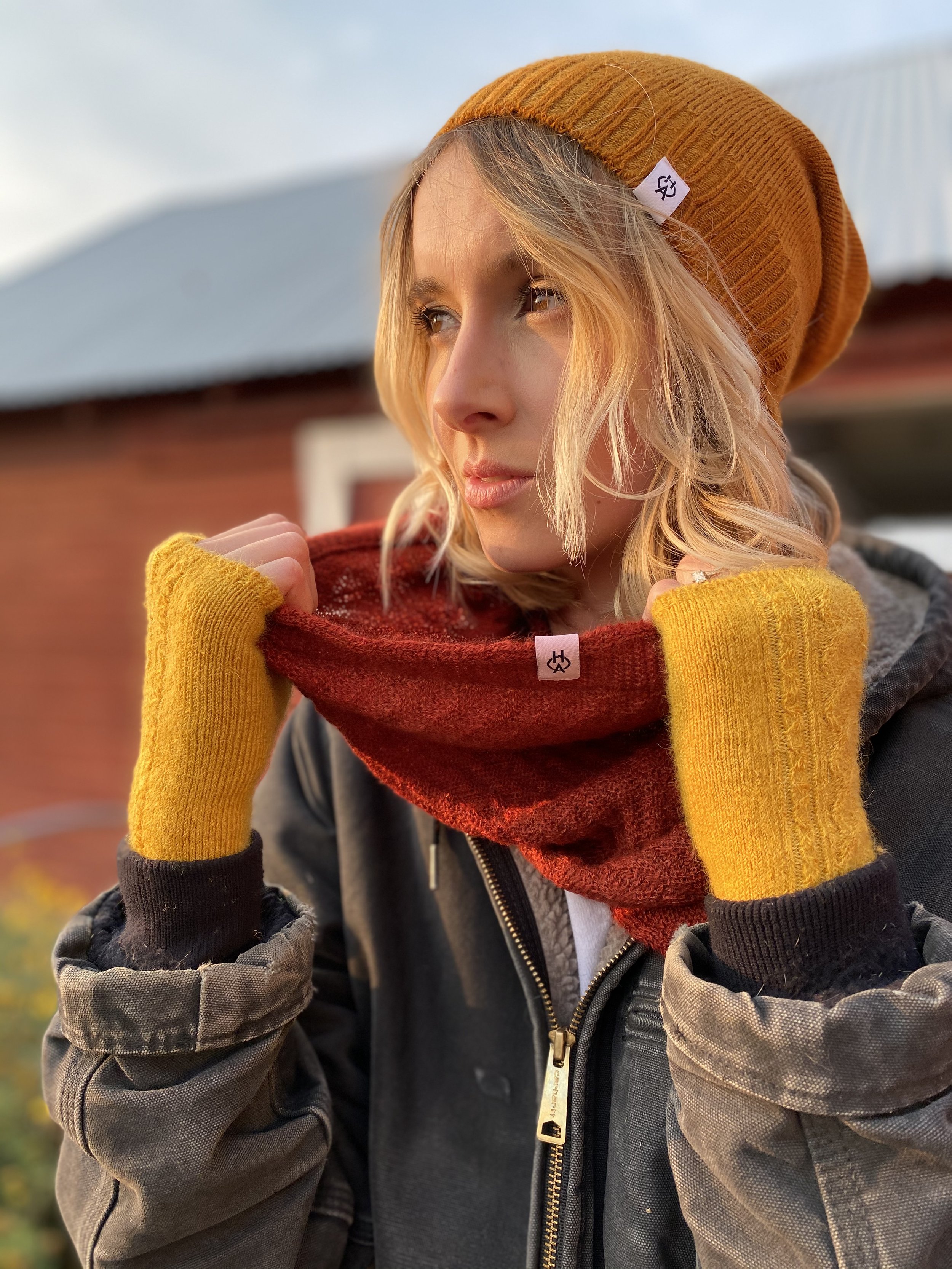

Knitwear Collection “tasting notes”
Similar to the unique terroir of the fine wines grown here in the Walla Walla valley, every Collection produced on our farm covertly captures a distinct sense of place.
The Collection encompasses the high performance traits inherent to the fiber - insulating warmth, naturally wicking and hypo-allergenic.
Bound to each fiber are all the unspoken environmental factors occurring during its growth - nourished by fresh spring pastures…occasional summer showers after long, hot days…brisk fall breezes and snow-capped winter nights.
The saturated colorways are courtesy of the passing season’s dye garden - an assortment of heirloom dye-bearing flowers and roots used by our ancestors for millennia.
Rich, deep color grown alongside the fiber, using the nutrient-dense manure from the herd.
Vintage Collection Notes
2024 - Tasting Notes
Click here to read the tasting notes from the 2024 Collection.
Click here to read the tasting notes from the 2023 Collection
Click here to read the tasting notes from the 2022 Collection
2021
This vintage is comprised of fiber grown during a global pandemic — April 2020 through April 2021. It was an unprecedented time, punctuated with constant change, growing uncertainty, and unrelenting worry. But the resulting fiber is as soft as it is resilient.
Unable to welcome visitors to the farm, it was a season of quiet reserve and longing, making this Collection homegrown in the most genuine of ways.
Many evenings were spent in the barn listening to the symphony of a happy herd munching on delicate green hay. It became a meditative part of our daily routine and helped to pass the unusually long, dark winter.
Finding joy in the everyday became our ethos and it is seamlessly woven into each finished piece.
The whipping winds that arrived in January and February were no match for their fiber. Easily 6 inches in length, it provided a stunningly beautiful cover as it billowed and bounced!
The increasing daylight revealed its luster and sheen - a humble reminder that it was there the whole time.
The snowcapped winter days showcased just how insulating the fiber is - the herd never shied away from frolicking in a fresh dusting or traversing through a deep blanket.
Despite ample barn space, their winter coats equipped them to enjoy many a frosty evening reflecting under the stars…a reminder that nature always provides!
March brought enthusiastic anticipation when it became evident we had 4 new baby cria on the way.
The tiny cria tumbled and turned from within, creating ripples and waves of fleece on the bellies of mamas-to-be, and earnestly wrapping each piece of the Collection in great expectation & a deep sense of renewal.
With the help of friends, our annual harvest happened on a Tuesday morning at the end of April. With busy hands and the steady buzz of clippers —the final phase of growing came to a close.
The silken strands were shorn off in sheets. Then were bundled and rolled, and readied for shipment. Evidence that transformation is as swift as it is essential.
A safe and bountiful harvest went by in a fuzzy blur - like much of the year that went into growing it.
365 days of sunshine, water and grass would take another several months to be condensed into cones of pristine yarn.
It was a year of many lessons where each piece of the Collection is confirmation that perseverance will never go out of style.
2020
Grown predominantly in 2019, the year before the whole world would be brought to its knees.
And a beautiful year it was - ideal growing conditions, a healthy herd and lots of farm visitors.
April 29th, 2020 was our annual harvest, and we reaped our biggest bounty - 60 pristine pounds of prime fiber.
It was a harvest that almost didn’t happen as the pandemic was taking hold across the nation.
Fortunately the family run fiber mill in Tennessee was still able to process our harvest.
The yarn returned to the farm in July - a small lot of knitting yarns for the local shop and a large batch of super fine yarn ready for the knitting machines.
Finished garments, including a re-styled beanie hat, were completed in August and went straight into the dye pots using the dye plants grown faithfully alongside the herd all summer.
Our very first crop of indigo produced the bluest sky blues, and grass greens when dyed yellow first.
Crimsons and corals came from madder roots; butterscotch and lemon from chamomile; coppers and pumpkin hues from coreopsis; and bronzed yellow from marigold.
Want to know the top 5 Reasons to Love Alpaca?
Well you’re in the right place!
Join our free email list to become a member of our Virtual Herd.
And I’ll share the top 5 not-so-common reasons to love alpaca.
You’ll also get periodic inspiring & uplifting notes from the farm right to your inbox…
Including first dibs for farm events where you can meet the actual herd in person!

